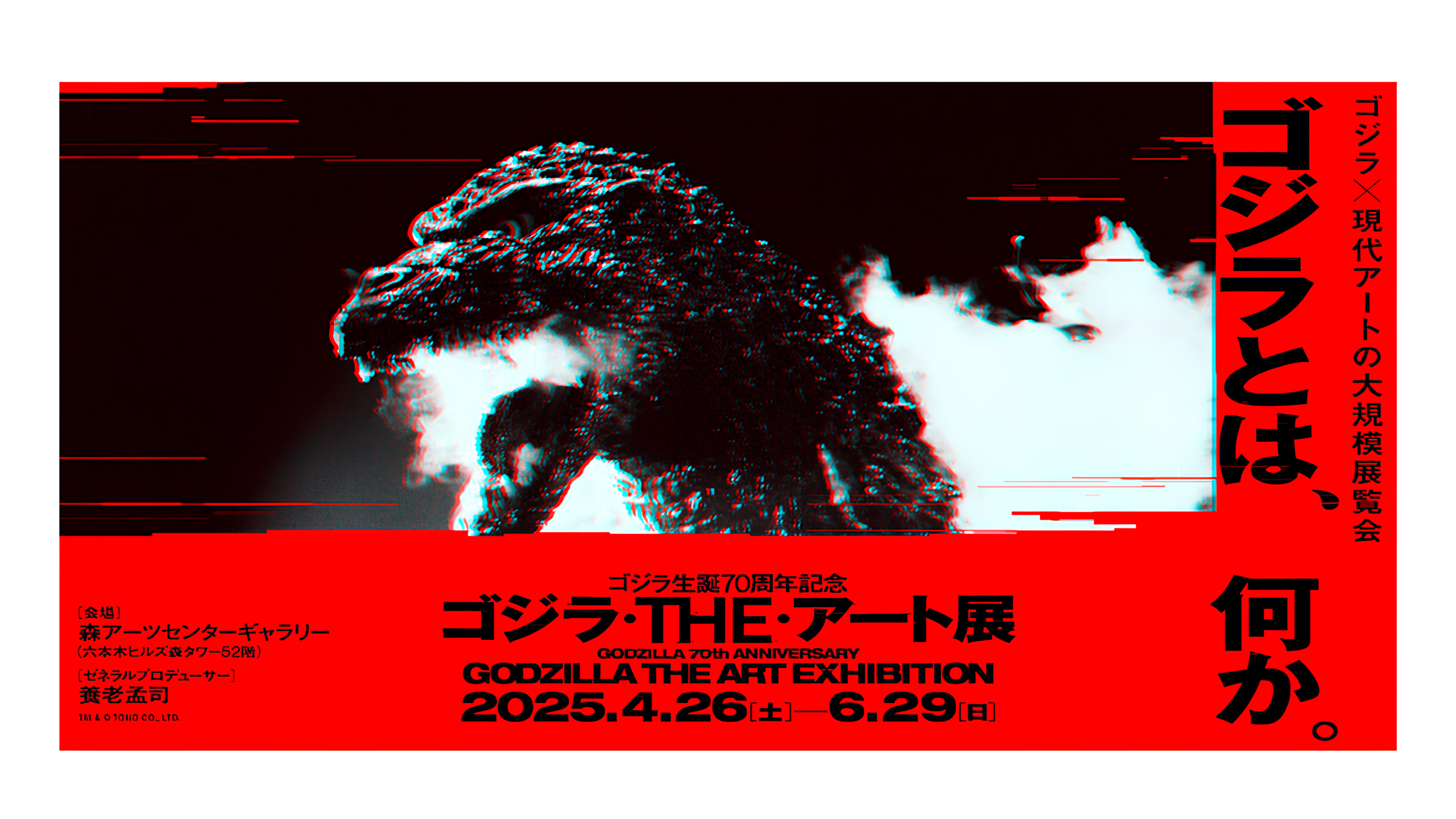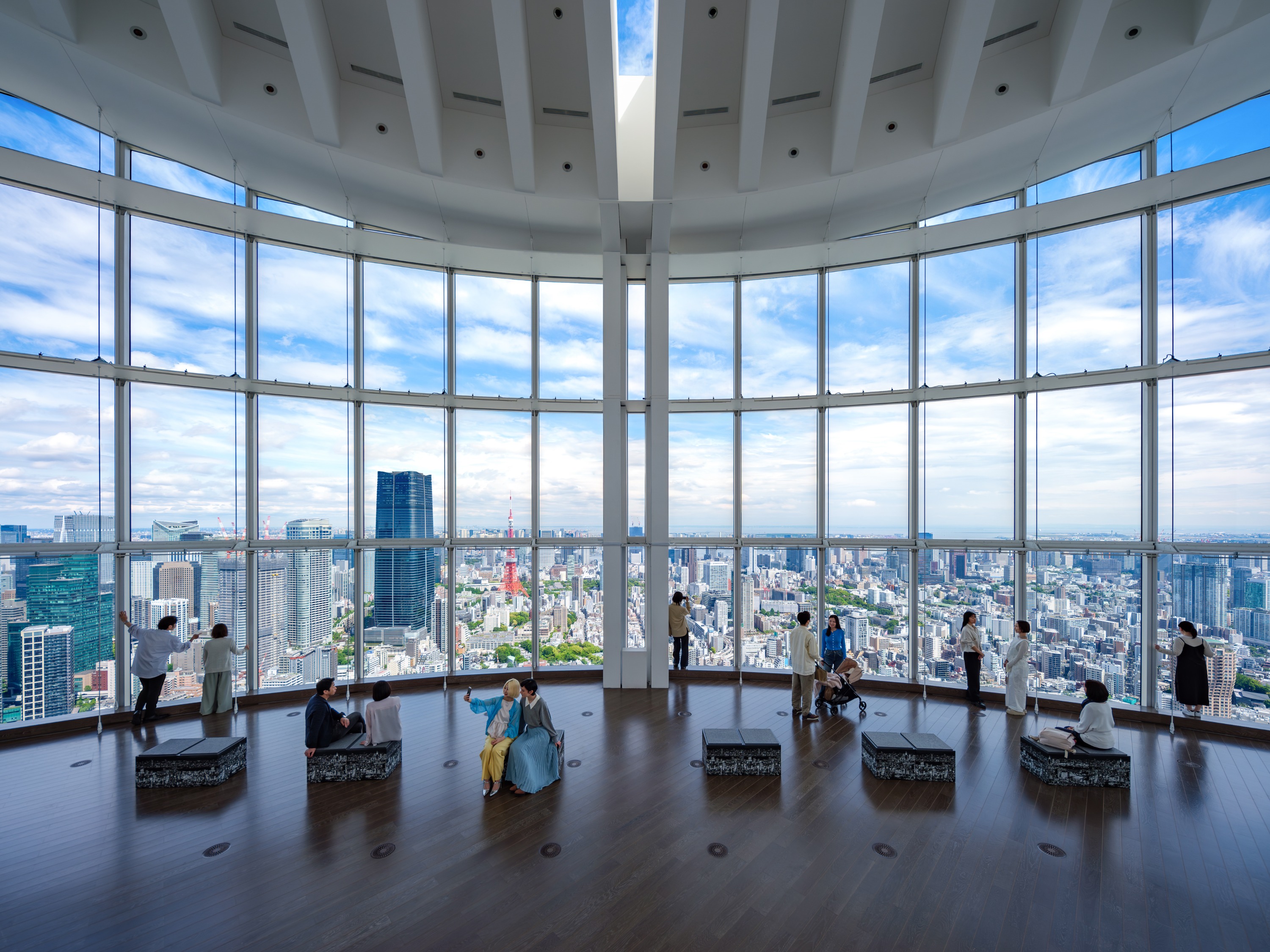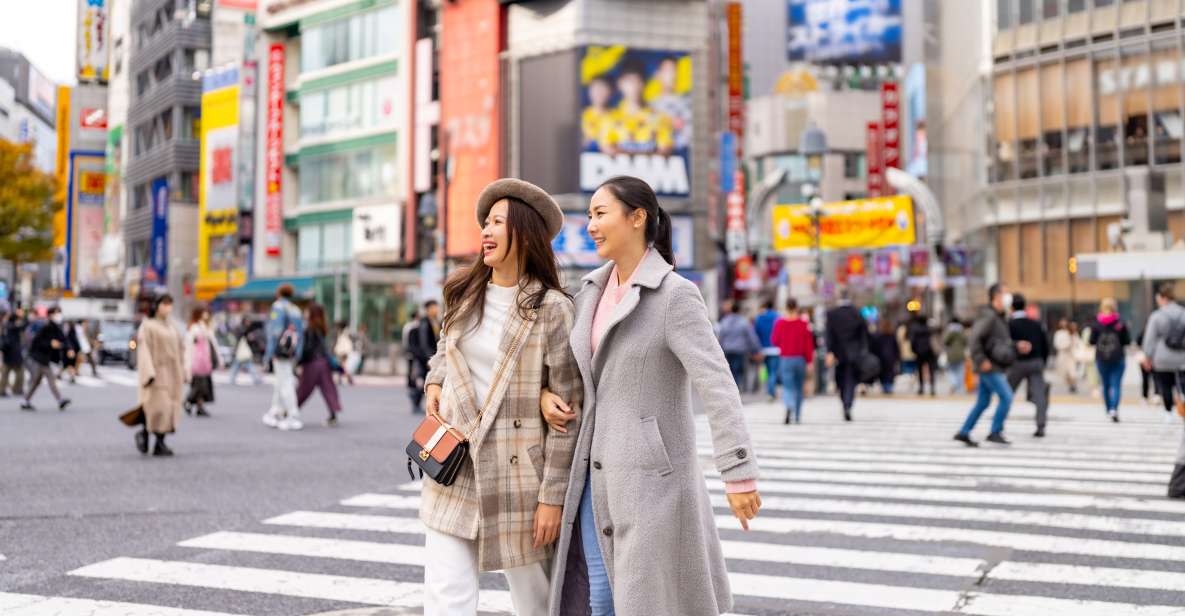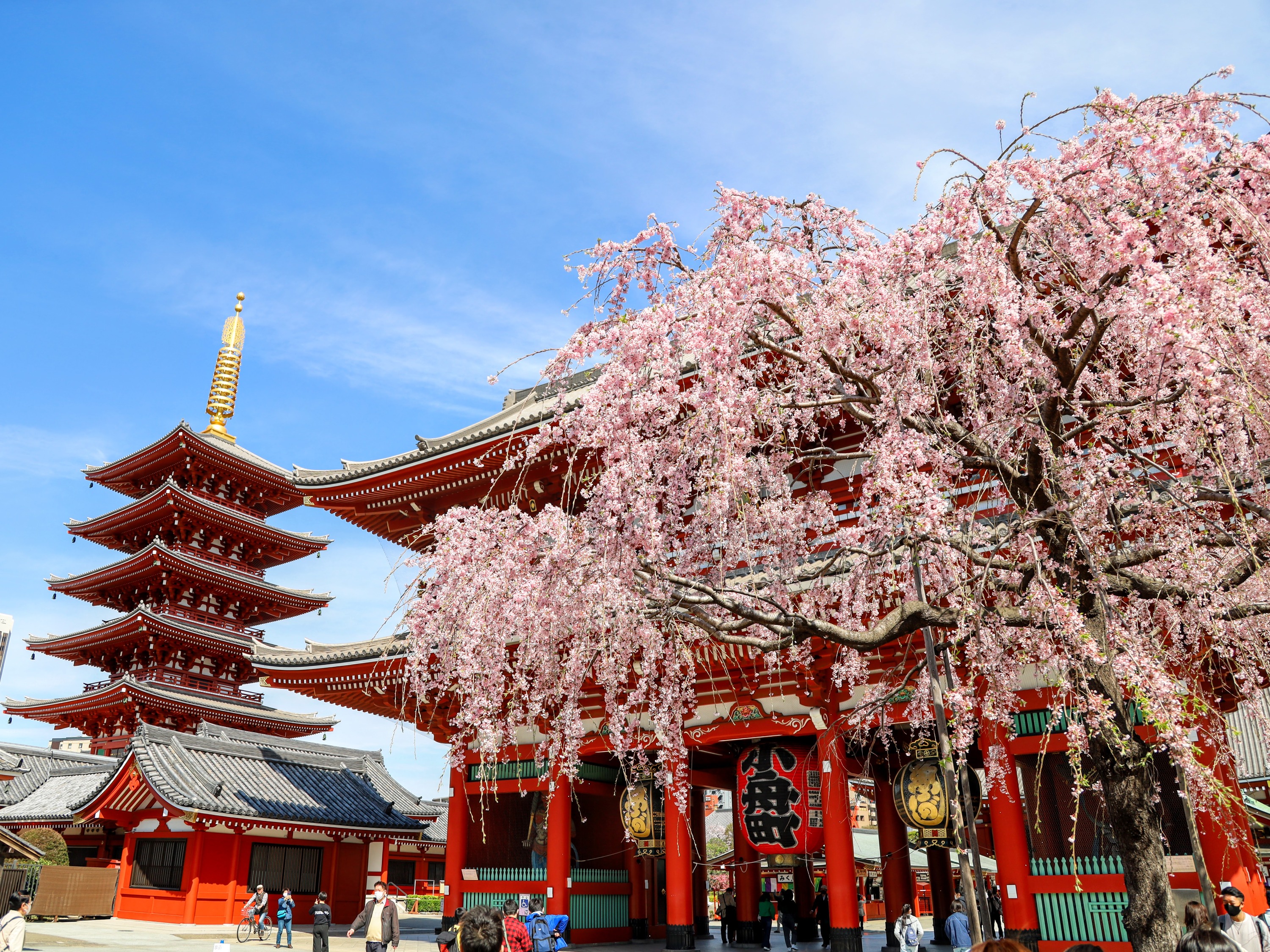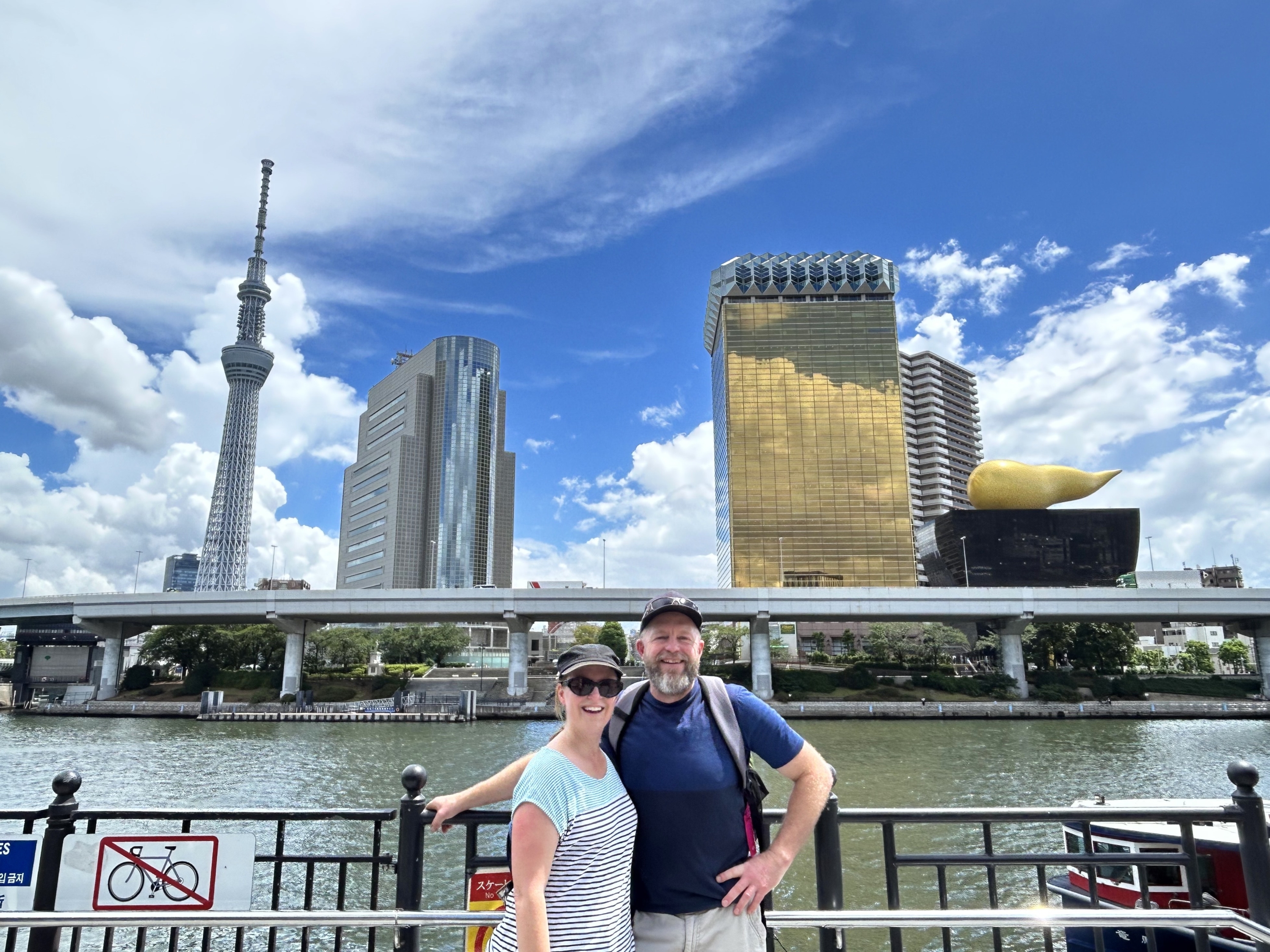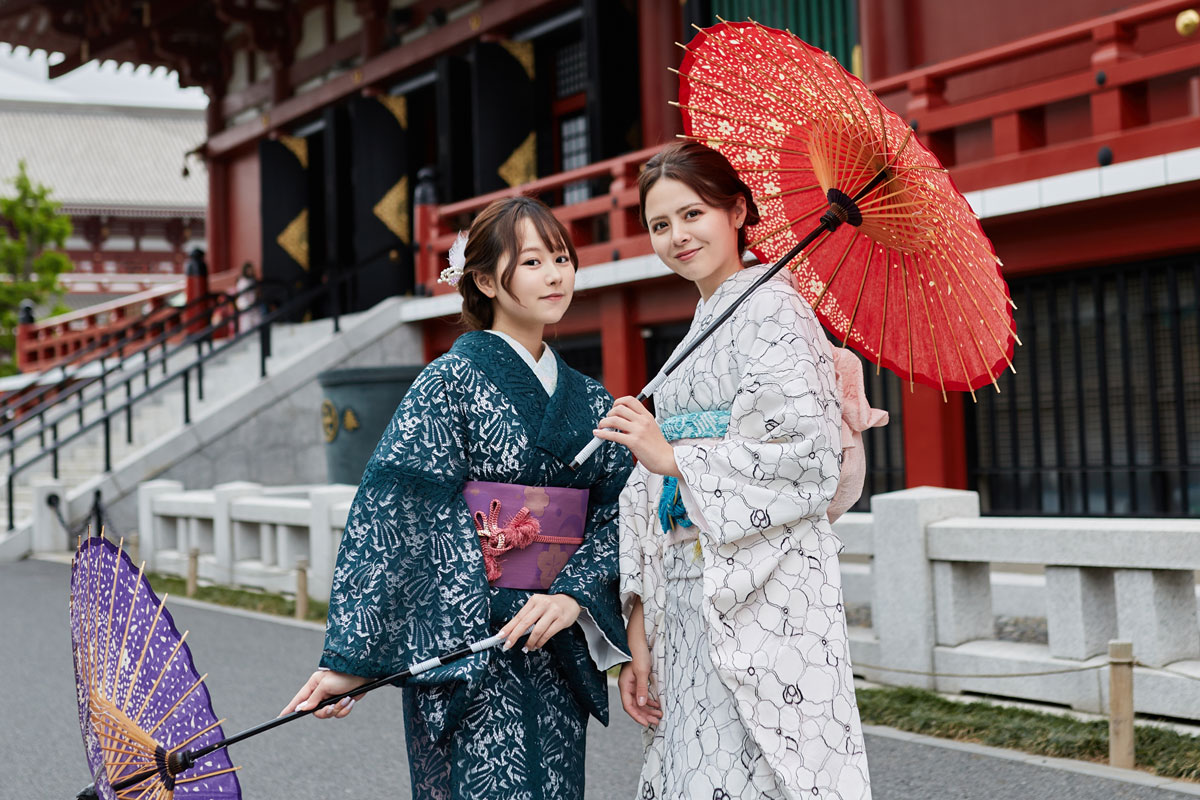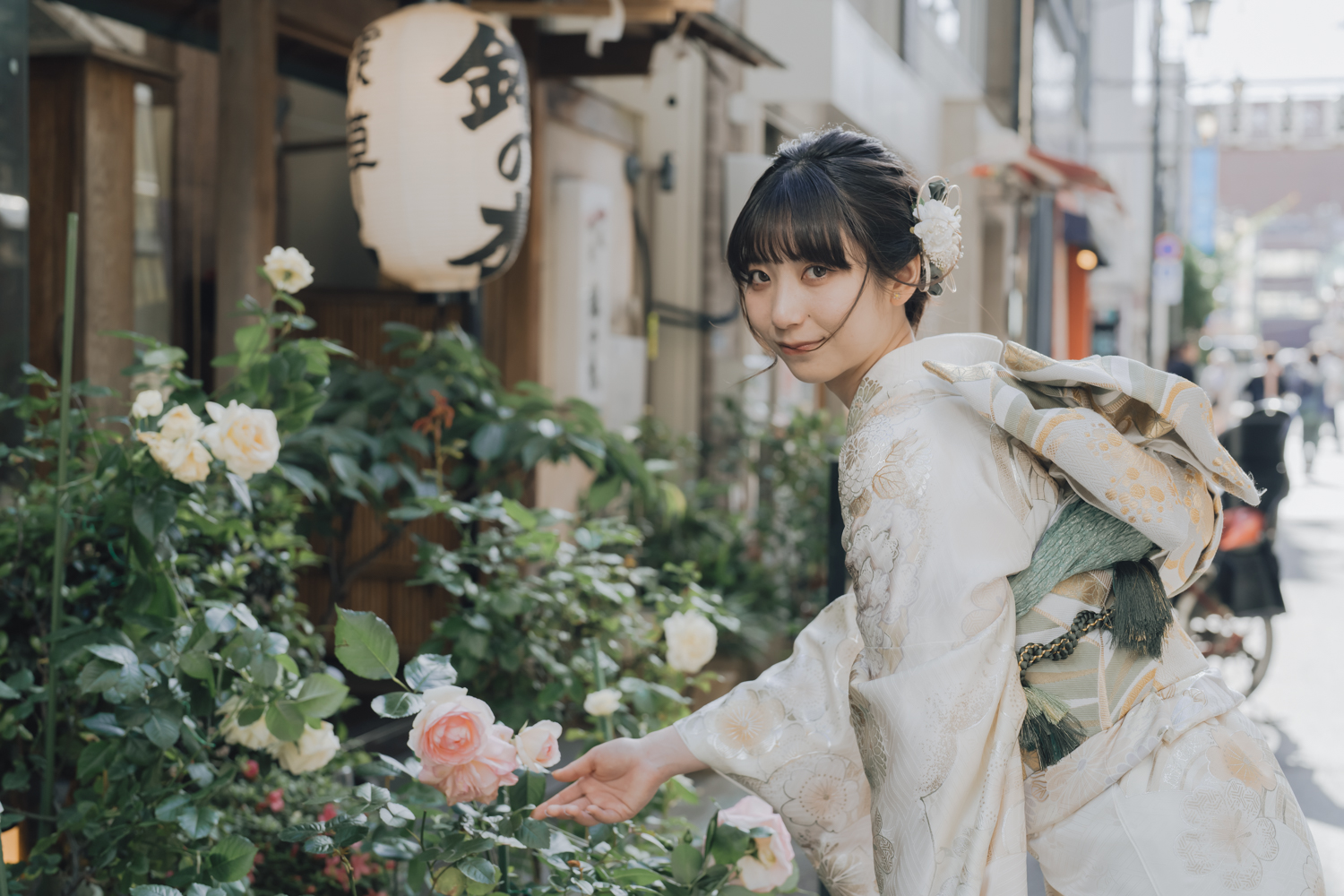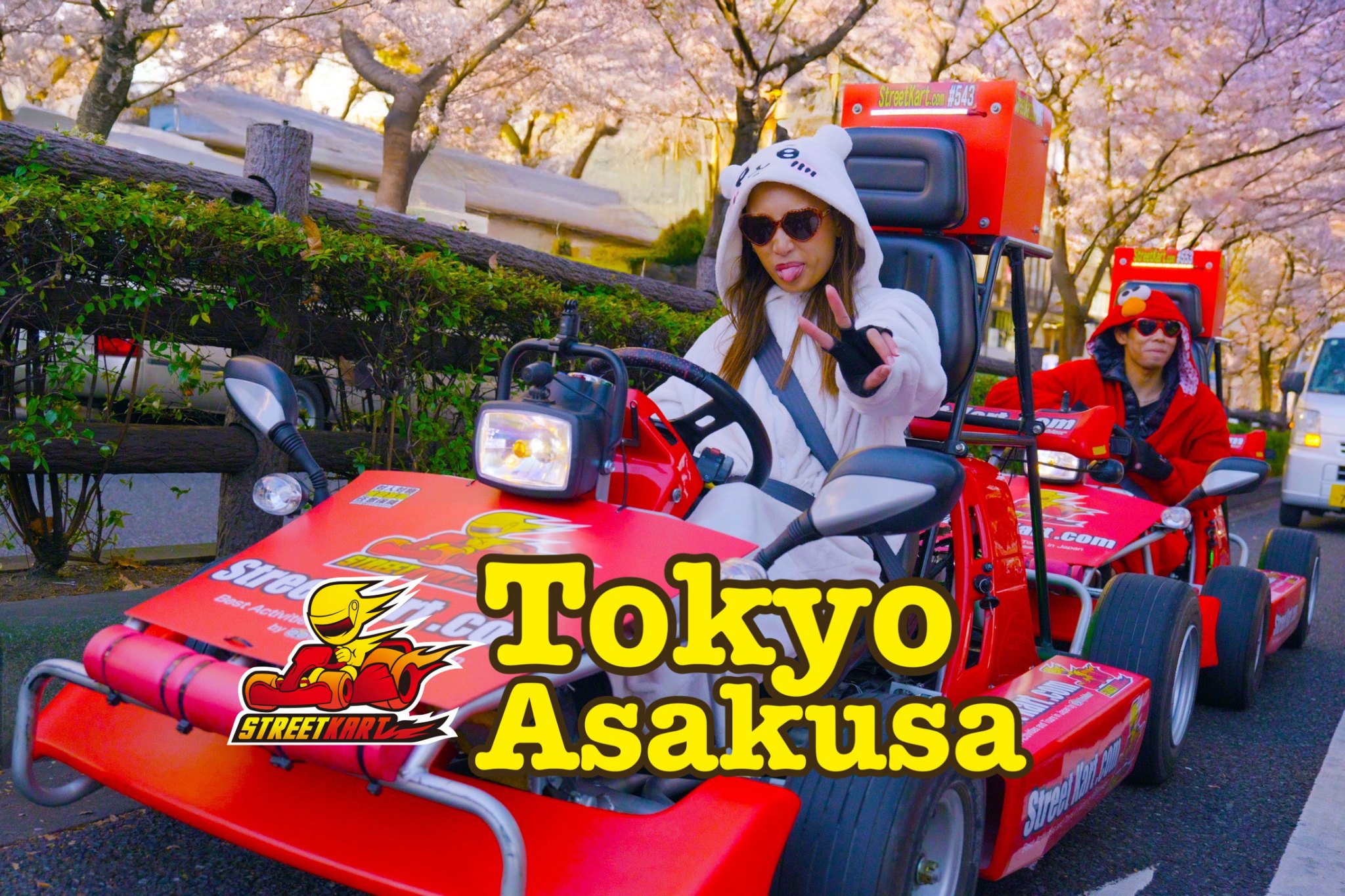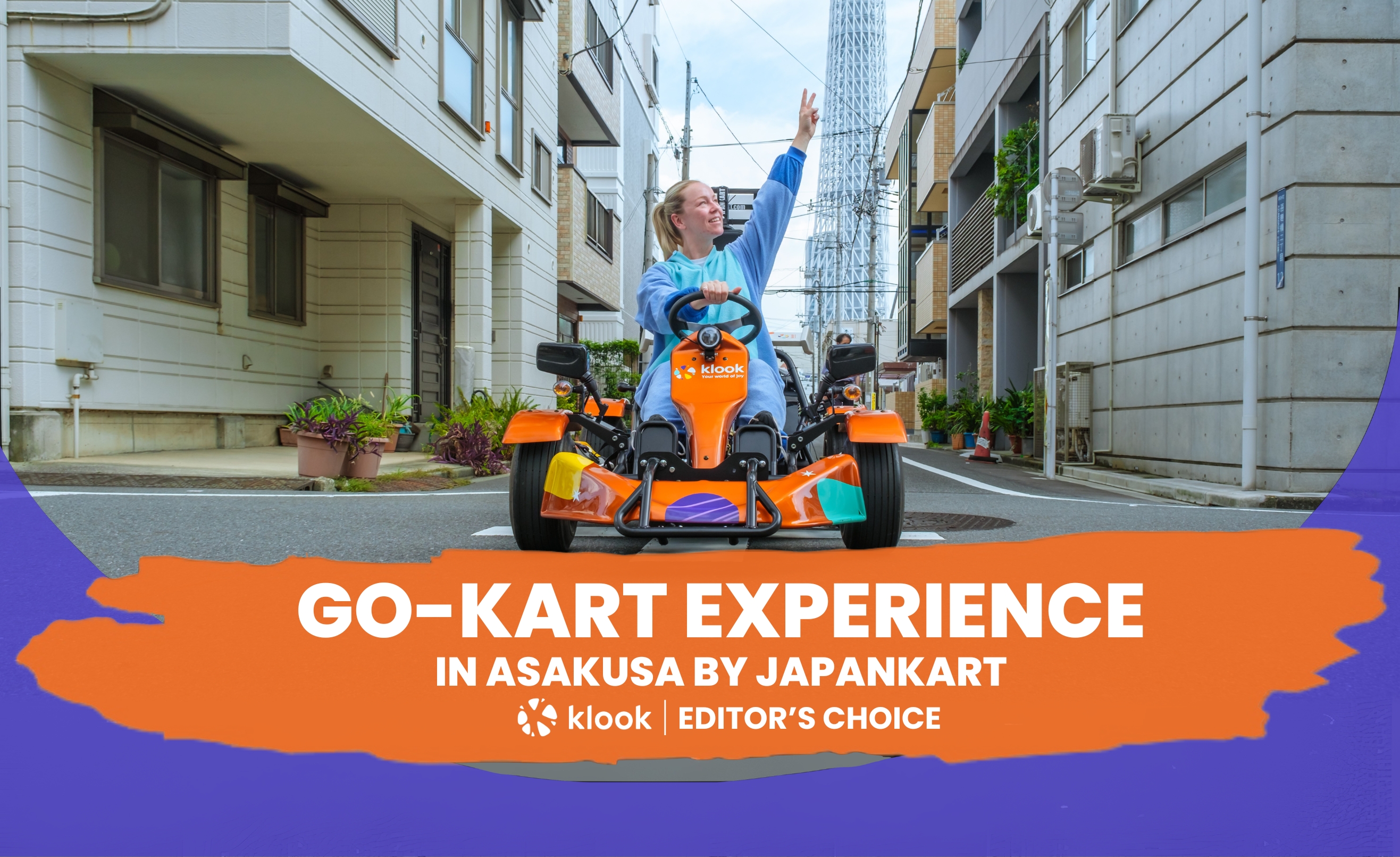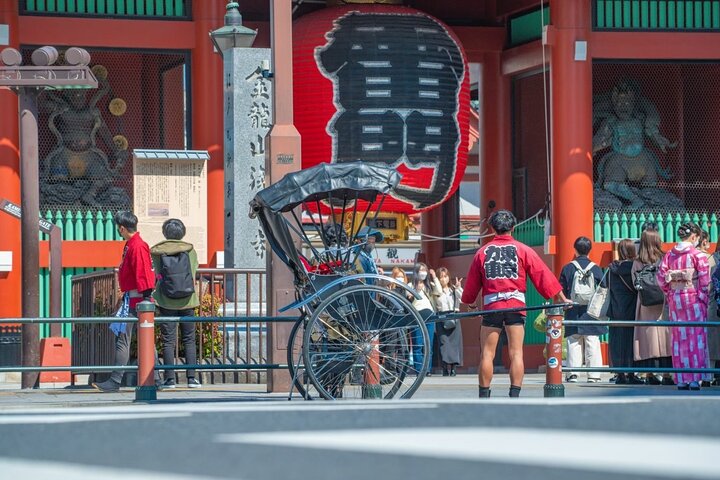
In Japan, summer means festival season! Enjoy an array of Japanese traditions with dances, music, and portable shrine parades filling the hot summer months with excitement and joy. Beat the heat with happiness as you savor local culture dating back hundreds of years, alive and well in Tokyo's modern age!
July
Kagurazaka Festival (Jul 26 & 27)

While the Hozuki Market takes place on the 24th and 25th, displaying beautiful Chinese lantern plants, performances of Tokushima Prefecture's traditional Awa Odori take place on the 26th and 27th of July.
The main venue of the Hozuki Market is the grounds of the Bishamonten Zenkoku Temple and apart from selling beautiful potted lantern plants, local eateries sell their delicacies at various food stalls.
Awa Odori, following the market, is an old Buddhist tradition and is performed by about 20 participating groups each day. The nimble dancers parade along Kagurazaka Street, an event that is not to be missed!
- Venue: Along the main street in Kagurazaka
- Date/Time: July 24-25, 5 PM - 9 PM
- Official website
-

-
Address
3, Kagurazaka, Shinjuku-ku, Tokyo, 162-0825
View Map -
Nearest Station
Iidabashi Station (JR Chuo Main Line / Tokyo Metro Tozai Line / Tokyo Metro Yurakucho Line / Tokyo Metro Namboku Line / Toei Oedo Line)
1 minute on foot
- Phone Number 03-3209-1111
-
Address
3, Kagurazaka, Shinjuku-ku, Tokyo, 162-0825
Shinjuku Eisa Festival (Jul 27)

Eisa is Okinawa Prefecture's traditional Bon Odori - the dance performed during the Buddhist festival of Obon, a festival that honors ancestor spirits. Twenty-six organizations take part in the Shinjuku Eisa Festival, showcasing Okinawa's traditional eisa performances in colorful costumes, accompanied by powerful Taiko drums and energetic cheering. The buoyant festival is being held around both Shinjuku Station East and West Exit. Head over for an authentic breeze of Okinawan culture and celebrate the Japanese summer!
- Venue: Around Shinjuku Station East Exit and West Exit
- Date/Time: July 27 from 12 PM - 8 PM
- Official website
-

-
Address
3-38-1 Shinjuku, Shinjuku-ku, Tokyo, 160-0022
View Map -
Nearest Station
Shinjuku Station (JR Shonan Shinjuku Line / JR Yamanote Line / JR Chuo Main Line / JR Saikyo Line / Tokyo Metro Marunouchi Line / Toei Shinjuku Line / Toei Oedo Line / Keio Line / Keio New Line / Odakyu Odawara Line)
- Phone Number 03-3342-5988
-
Address
3-38-1 Shinjuku, Shinjuku-ku, Tokyo, 160-0022
Nogi Shrine Summer Festival (Jul 27-28)

The Nogi Shrine Summer Festival is an exciting community event that’s not only about food and fun but also about learning. It’s a great place for families to experience a Japanese summer festival while exploring culture and history at both Nogi Shrine and Nogi Kaikan.
Look forward to savoring kakigōri (shaved ice) and cotton candy while trying your hands at balloon fishing, a classic game of Japanese summer festivals! Besides that, events such as picture story shows and performances by a mixed chorus are held to entertain the visitors. And don’t miss out on browsing the festival’s antique market to find a one-of-a-kind souvenir!
- Venue: Nogi Shrine area
- Date/Time: July 27-28, 2024 from 3 PM - 8 PM
- Official website
-

-
Address
8-11-27, Akasaka, Minato-ku, Tokyo, 107-0052
View Map -
Nearest Station
Nogizaka Station (Tokyo Metro Chiyoda Line)
1 minute on foot
- Phone Number 03-3478-3001
-
Address
8-11-27, Akasaka, Minato-ku, Tokyo, 107-0052
August Events
Toro Nagashi: The Asakusa Summer Night Festival (Aug 10)

This beautiful festival dates back to the year 1946, when hundreds of paper lanterns were set down on the Sumida River as a memorial to the victims of the Second World War. After that, the Toro Nagashi festival didn't take place for a while during shore protection work on Sumida River but it was revived in 2005. The lanterns travel down the river from the Sumida Park River Terrace, each carrying a thought of the person who set it down. The soft light of the lanterns that glitter on the water's surface creates a warm, almost mysterious atmosphere. Tourists are welcome to take part in the festival and you can register for a lantern yourself on the same day that the festival is held on.
- Venue: Riverbank close to Asakusa Station exit 5 (Ginza Line)
- Date/Time: August 10 from 6:30 PM - 8 PM
- Official website
-

-
Address
Sumida-ku, Tokyo, 131-0033
View Map -
Nearest Station
Asakusa Station (Tokyo Metro Ginza Line / Toei Asakusa Line / Tobu Isesaki Line (Tobu Skytree Line) / Tsukuba Express)
5 minutes on foot
Book an experience
Please check the partner website for details on the latest rates. -
Address
Sumida-ku, Tokyo, 131-0033
Tomioka/Fukagawa Hachiman Festival (Aug 11-15)

This massive event is one of the Three Great Festivals of Edo, along with the Sanja and Sanno Festivals. On August 11, the large portable shrine called “Nonomiya Mikoshi,” which weighs 2 tons, is paraded around the streets in a spectacular fashion – that only happens once every three years! The parade is accompanied by the traditional shouts “Wasshoi, wasshoi!” as purifying water is poured on both participants and visitors alike.
- Venue: Area around Monzen-nakacho
- Date/Time: Around August 8, 2026
- Official website
-

-
Address
1-2-3, Tomioka, Koutou-ku, Tokyo, 135-0047
View Map -
Nearest Station
Monzen-Nakacho Station (Tokyo Metro Tozai Line / Toei Oedo Line)
3 minutes on foot
- Phone Number 03-3642-1315
-
Address
1-2-3, Tomioka, Koutou-ku, Tokyo, 135-0047
Roppongi Hills Bon-Odori (Aug 23-25)

This is a true Roppongi summer tradition: over 60,000 people visited the three-day long festival in 2017. The dance itself is held on the 25th and 26th in the Roppongi Hills Arena and traditionally begins with Roppongi's original song "Ropponjin Ondo", which translates to "the dance of the people of Roppongi". When the people dance around the traditional wooden scaffold to the song's tunes, Roppongi's Obon has officially begun!
During the festival, the shops and restaurants inside Roppongi Hills are also opened, so why not enjoy a delicious gourmet snack in between the dances? There are even special food items to be savored that are available only during Obon.
- Venue: Roppongi Hills area
- Date/Time: August 23-25, 2024 from 5 PM - 8 PM
- Official website
-

-
Address
6-10-1, Roppongi, Minato-ku, Tokyo, 106-6108
View Map -
Nearest Station
Roppongi Station (Tokyo Metro Hibiya Line / Toei Oedo Line)
0 minute on foot
- Phone Number 03-6406-6000
Book an experience
Please check the partner website for details on the latest rates. -
Address
6-10-1, Roppongi, Minato-ku, Tokyo, 106-6108
Harajuku Omotesando Genki Matsuri: Super Yosakoi 2024 (Aug 24-25)

The yosakoi festival was born in Kochi Prefecture in the year of 1954 in the context of projects to revitalize and develop the local economy. Yosakoi makes use of little instruments called naruko that bring sound to the energetic dance of people in colorful outfits. This custom took Japan by storm and today, yosakoi festivals can be enjoyed throughout the entire country. The Harajuku Omotesando Genki Matsuri: Super Yosakoi was first held in 2001 as a shrine festival dedicated to Meiji Shrine. In 2017, 106 teams took part and drew a crowd of about 840,000 spectators.
Access
Around the Harajuku Station and Omotesando Station area
- Venue: Meiji Jingu
- Date/Time: August 24-25
- Official website
-

-
Address
1-1, Yoyogikamizonocho, Shibuya-ku, Tokyo, 151-8557
View Map -
Nearest Station
Sangubashi Station (Odakyu Odawara Line)
- Phone Number 03-3379-5511
Book an experience
Please check the partner website for details on the latest rates. -
Address
1-1, Yoyogikamizonocho, Shibuya-ku, Tokyo, 151-8557
Azabu-juban Summer Night Festival (Aug 24-25)

As one of Tokyo's most popular festivals, the Azabu-Juban Summer Night Festival attracts around half a million visitors every year. Attendees enjoy strolling down the street and indulging in various snacks throughout the night. Azabu-Juban is renowned as a shopping street, home to many famous luxury and brand stores near the numerous embassies. The festival also features an area called "Oragakuni Jiman," which showcases over 50 cities, towns, and regions from across Japan, offering regional produce and specialties. Visitors can savor local dishes, sake, and beer. Additionally, the event includes a stage at Patio Juban where dance and music performances entertain the crowd.
- Venue: Patio Juban and surrounding area
- Date/Time: Date: August 24-25, 2024 from 3 PM - 9 PM
- Official website
-
Patio Juban, etc.パティオ十番、ほか
- Address 2-3-10, Azabujuban, Minato-ku, Tokyo, 106-0045
September Events
Daradara Festival (Sep 11-21)

The Daradara Festival is one of Japan’s longest shrine festivals, lasting from the 11th to the 21st of September, offering a large variety of traditional performances and dances. The highlight of these celebrations takes place on the 16th, a day that is entirely dedicated to Japanese court music and dances. In ancient times, the festival was also known as the “ginger market,” as ginger was sold extensively on the shrine grounds and its vicinity. This is because, the shrine used to be surrounded by a vast ginger field and thus, many people offered ginger roots to the Shinto deity enshrined within. Even today, fresh ginger roots are being sold every day. Make sure to get your hands on some - a person who regularly consumes some ginger is said to never ever catch a cold!
- Venue: Daimon Station area
- Date/Time: September 11-21, 2024; highlights from 10 AM and 2 PM on the 15th; from 11 AM on the 16th.
- Official website
-

-
Address
1-12-7, Shibadaimon, Minato-ku, Tokyo, 105-0012
View Map -
Nearest Station
Hamamatsucho Station (JR Keihin-Tohoku Line / JR Yamanote Line)
1 minute on foot
- Phone Number 03-3431-4802
-
Address
1-12-7, Shibadaimon, Minato-ku, Tokyo, 105-0012
Akasaka Hikawa Matsuri (Sep 13-15)

This stunning event exhibits old floats from the Edo period as it is held, with the main shrine festival taking place on the Sunday. Look forward to a beautiful parade of those historic floats and 15 portable shrines! Especially noteworthy are geisha joining the procession, making the Akasaka Hikawa Matsuri a real summer must-see! Plenty of events are held on the shrine precincts during the weekend, including a Bon-Odori dance and the Akasaka Meitengai, gathering famous shops of the area that entice with local products!
- Venue: Hikawa Shrine area around Akasaka
- Dates/Time: September 13-15, 2024; various times, generally from 3 PM - 9 PM. See official website for details.
- Official website
-

-
Address
6-10-12, Akasaka, Minato-ku, Tokyo, 107-0052
View Map -
Nearest Station
Akasaka Station (Tokyo Metro Chiyoda Line)
8 minutes on foot
- Phone Number 03-3583-1935
-
Address
6-10-12, Akasaka, Minato-ku, Tokyo, 107-0052
Asakusa Samba Carnival (Sep 15)

Japan's largest samba parade takes place in Asakusa's summer heat. Ever since its beginnings in 1980, the festival has grown in size and scale every year, leading up to half a million visitors in 2017. On this day, samba teams from all over Japan come together, each one of them showing off their costumes and skills under a theme that the teams chose for themselves.
- Venue: Area around Asakusa Station
- Date/Time: September 15, 2024 from 12 PM - 5 PM
- Official website
-

-
Address
2-3-1, Asakusa, Taitou-ku, Tokyo, 111-0032
View Map -
Nearest Station
Asakusa Station (Tokyo Metro Ginza Line / Toei Asakusa Line / Tobu Isesaki Line (Tobu Skytree Line) / Tsukuba Express)
1 minute on foot
- Phone Number 03-3842-0181
Book an experience
Please check the partner website for details on the latest rates. -
Address
2-3-1, Asakusa, Taitou-ku, Tokyo, 111-0032
Shinagawa Shukuba Festival (Sep 28-29)

The 29th of September marks the day of the procession of oiran, an enigmatic procession of courtesans of old, that celebrates Shinagawa’s history as a bustling rest stop on the way between Edo and Kyoto. Besides the parade, there’s a lot more to see and do, such as stalls offering food, drinks, and various goods in Seiseki Park, and a children’s stage that definitely shouldn’t be missed.
On the 29th, there’s the Old Edo parade, a traditional procession of Honsen-ji firefighters, stalls from Shinagawa's hotel restaurants offering their delicacies, street rakugo, and a mini steam locomotive occupying the Tokaido Street. To make this Old Edo experience complete, there’s also a vegetable all-you-can-grab offer and a workshop on the traditional art of creating stuffed animals – spend an entire day in Old Edo, there’s so much to see and do!
- Venue: Within short walking distance of Kita-Shinagawa Station, Shimbamba Station, or Aomono-yokocho Station
- Date/Time: September 28-29, 2024 from 11 AM - 4 PM
- Official website
-

-
Address
1, Kitashinagawa, Shinagawa-ku, Tokyo, 140-0001
View Map -
Nearest Station
Kitashinagawa Station (Keikyu Main Line)
2 minutes on foot
- Phone Number 03-3472-4772
-
Address
1, Kitashinagawa, Shinagawa-ku, Tokyo, 140-0001
Fukuro Festival (Sep 28-29; Oct 12-13)

This year, the famous Fukuro festival begins on the evening of September 28, while the mikoshi parade takes place on Sunday 29. Fourteen local groups gather in Ikebukuro, filling Ikebukuro with both shrine parades and eager spectators. October 12 marks the day of the dance festival, featuring intriguing performances such as hula, Kyokushin Karate shows, Edo-gei Kappore (a traditional comic dance), the Sado Okesa dance, the Ikebukuro Yassa, Eisa from Okinawa, and of course the Tokyo Ondo – this lineup promises a colorful dance festival!
- Venue: Ikebukuro Nishiguchi Park area
- Date/Time: September 28-29, 2024; October 12-13, 2024. From 1 PM - 7:40 PM.
- Official website
-

-
Address
1-8-26, Nishiikebukuro, Toshima-ku, Tokyo, 171-0021
View Map -
Nearest Station
Ikebukuro Station (JR Shonan Shinjuku Line / JR Yamanote Line / JR Saikyo Line / Tokyo Metro Marunouchi Line / Tokyo Metro Yurakucho Line / Tokyo Metro Fukutoshin Line / Seibu Ikebukuro Line / Tobu Tojo Line)
1 minute on foot
- Phone Number 03-3981-0534
-
Address
1-8-26, Nishiikebukuro, Toshima-ku, Tokyo, 171-0021
*Prices and options mentioned are subject to change.
*Unless stated otherwise, all prices include tax.
-

Family Mart is giving away free socks for your ice cream in Japan
-

With arrests of foreigners in Japan increasing, police no longer guarantee in-person translators
-

Fewer Japanese people traveling domestically, government blames birth rate, others blame foreign crowds, costs
-

Tokyo travel hack: How to enjoy a free sightseeing boat tour around Tokyo Bay
-

Step Into the World of Chiikawa: Immersive 'Chiikawa Park' to Open in Ikebukuro's Sunshine City This July!
-

No more using real katana for tourism activities, Japan’s National Police Agency says
Inspiration for Accommodations
-

Enjoy Mt. Fuji from the Comfort of Your Room! Recommended Ryokan with Mt. Fuji View
-

Stay Near the Cherry Blossoms! Hotels for Cherry Blossom Viewing in Tokyo
-

Family-Friendly Hotels with Free Shuttle to Disneyland: Convenient Access for a Magical Stay
-

Top Ranked Hakone Hotels with Mt. Fuji View: Enjoy Stunning Scenery from Your Private Space
-

Convenient Tokyo Hotels with Airport Shuttle: Ideal for Families and Heavy Luggage
-

Stunning Tokyo Tower View Hotels: Enjoy Spectacular Scenery from Your Private Space
-

Convenient Asakusa Hotels with Kitchens: Ideal for Extended Family Visits
-

Experience Luxury: Hakone's 10 Best Five-Star Accommodations
-

Enjoy Mt. Fuji Autumn Leaves! Top Hotels Near the Popular Autumn Leaves Corridor
-

Experience Hakone Fall Foliage from Your Room with Stunning Views
-

Guide to Tokyo's Old Quarter: 7 Quaint Spots in Yanesen!
-

Top Events & Festivals in Asakusa (Tokyo): Discover Year-Round Traditions and Fun
-

4 Best Tokyo Festivals in March: Fun Ways to Greet Spring
-

Asakusa Sanja Matsuri (May 16-18, 2025): Inside One of Tokyo's Greatest Festivals
by: Jiei Kurabayashi
-

Ueno Station Area Guide: Fun Ways to Explore Tokyo's Popular Destination (Area Map & Sightseeing Tips)
-

Tokyo Train Map: Your Essential Guide to Subways and Railways
- #best ramen tokyo
- #what to buy in ameyoko
- #what to bring to japan
- #new years in tokyo
- #best izakaya shinjuku
- #things to do tokyo
- #japanese nail trends
- #what to do in odaiba
- #onsen tattoo friendly tokyo
- #daiso
- #best sushi ginza
- #japanese convenience store snacks
- #best yakiniku shibuya
- #japanese fashion culture
- #best japanese soft drinks
















